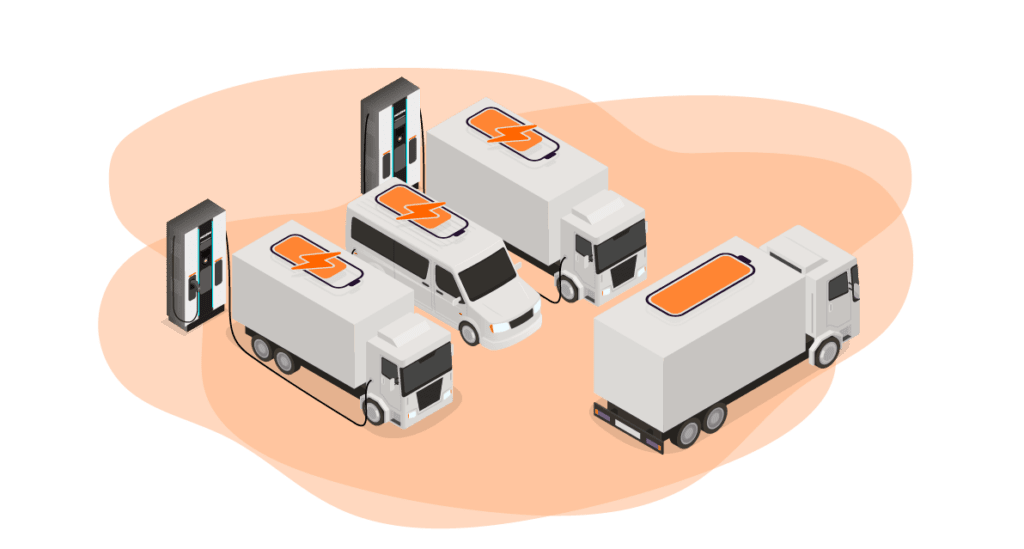Contact Info
2600 Technology Drive, Suite 100
Plano, Texas, 75074
United States
2600 Technology Drive, Suite 100
Plano, Texas, 75074
United States

Last Updated: December 26th, 2022 | Infrastructure
DC stands for direct current – the type of power a battery requires. However, most electric vehicle chargers use AC, alternating current, power to replenish batteries. Unfortunately, batteries do not accept AC power, so EVs must have a converter or rectifier. This changes the AC into DC to charge EV batteries. When no conversion is necessary, vehicles experience fast DC charging.
Whenever you feed AC Power into your EV, the convertor gets to work, converts it to DC power, and your battery charges. The rate of this converter varies by manufacturer and impacts the charging speed/ total time an EV needs to charge. As this process requires the additional task of power conversion, the AC-fueled charging speed is relatively slow. All Level 2 charging stations rated between 7 and 22 kilowatts (kW) use AC power from the power station, so they depend on the vehicle’s rectifier to change it into DC.
DC power charging stations bypass the converter so the charge can go directly into the vehicle battery. This speeds up the charging process, which is why it’s called fast or rapid charging. Using DC power results in faster charging time compared to charging with AC power. DC charging offers advantages when quick battery replenishment is required or preferred. One limiting factor concerns the connector type used to charge the vehicle.
Fast DC chargers use two types of connectors: CCS or CHAdeMO connectors. Tesla uses its own proprietary Type 2 – 120 kW DC connector.
DC chargers come in a range of sizes. Those with lower kW offerings can charge up to 50 kW, while the greater chargers go up to 180 or 360 kW. Not many vehicles currently available to consumers can accept that much power, so it’s essential to know your vehicle.
Well, there are a few reasons why that might not be the best option.
First, it depends on the connector type. Every EV has a maximum acceptance rate for power, so there is a max amount of AC power that the EV will be able to convert to DC. Additionally, there is a max DC power an EV can accept at one time.
Second, fast charging is best used only occasionally. The fast charging rate heats up the equipment, which can be bad for batteries. Consequently, regular rapid charging may degrade your EV’s long-term battery health.
Third, fast DC charging is the most expensive option. It requires high voltage and amperage, so the cost of electricity is higher. Also, since this is the fastest way of charging at any public station, you will be charged a higher rate for this charging.
Now you know what DC fast charging is and how it works. You also now know why the speed of AC home chargers is comparatively slower. Next time you want to top up EV batteries, you will be able to make an informed choice based on your situation. Choose wisely, and save yourself time and money!
| Cookie | Duration | Description |
|---|---|---|
| cookielawinfo-checkbox-analytics | 11 months | This cookie is set by GDPR Cookie Consent plugin. The cookie is used to store the user consent for the cookies in the category "Analytics". |
| cookielawinfo-checkbox-functional | 11 months | The cookie is set by GDPR cookie consent to record the user consent for the cookies in the category "Functional". |
| cookielawinfo-checkbox-necessary | 11 months | This cookie is set by GDPR Cookie Consent plugin. The cookies is used to store the user consent for the cookies in the category "Necessary". |
| cookielawinfo-checkbox-others | 11 months | This cookie is set by GDPR Cookie Consent plugin. The cookie is used to store the user consent for the cookies in the category "Other. |
| cookielawinfo-checkbox-performance | 11 months | This cookie is set by GDPR Cookie Consent plugin. The cookie is used to store the user consent for the cookies in the category "Performance". |
| viewed_cookie_policy | 11 months | The cookie is set by the GDPR Cookie Consent plugin and is used to store whether or not user has consented to the use of cookies. It does not store any personal data. |
